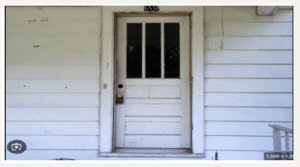Canvassing
Canvassing is a marketing technique that involves direct contact with potential customers or clients to promote a product, service, or cause.
Field Marketing Employment Agreement
General information and regulations of Avalon Roofing and Exterior
Avalon Employee Public Image and Customer Service Pledge
Perception of the business that affects customers
Avalon Field Marketing Behavioral Policy
Understanding the core policy's
Field Marketing the Basics
Training and Continuing Education,
Dress Code,
Technology,
Field Marketing Door Knocking Objectives,
How Avalon Evaluates Field Marketers
Avalon Field Marketing Vehicle Use and Mileage
Using company or personal vehicles
Avalon Field Marketing Training Schedule and Training Pay
Understanding what Training will look like and how much pay you will receive
Lead Generator Basics
Canvassing Basics
How a Shingle is Put Together
What to know about every layer of a Shingle
Identifying damage
How to identify damage to a roof
What To Look For
Examples of what to look for while canvassing
How to Approach the House
Knowing how to look, knock, and mark the house
Using the Slap System For Appointment Setting
Following the SLAP formula
Scripts (Initial Contact Options) (S, L, A)
Reference scripts to go by while at the homeowner's door
Rebuttals
What to do when you run into push back
Extra Videos to Watch
Different looks on how to Canvas
No questions yet
Be the first to ask your question! You’ll be able to add details in the next step.
Ask a new question
Add an answer
About Lesson
Old Doors & Wood Siding
Knock every old wooden door, wooden siding, the odds of them leaking or being damaged from water/ the elements are strong
Old doors can stick and not open, have drafts, and potential health hazards from lead-based paint

Reasons why having a wooden door can negatively affect your house:
1. Vulnerability to the Elements
- Moisture absorption: Wood naturally absorbs moisture, making it susceptible to issues like swelling, warping, and cracking, especially in humid or areas with fluctuating humidity levels.
- Rotting: If not properly sealed and maintained, wooden doors can rot due to prolonged exposure to moisture.
- Sun damage: Direct sunlight can cause the finish to flake or peel, leaving the wood exposed to damage.
2. Maintenance Requirements
- Regular refinishing: Wooden doors require periodic refinishing (painting or staining) to maintain their appearance and protect them from the elements.
- Protection from pests: Wood can be susceptible to termites and other wood-boring insects, requiring treatments and vigilance.
- Checking and replacing weatherstripping: Weatherstripping needs to be regularly inspected and replaced if damaged to prevent drafts and maintain energy efficiency.
3. Cost
- High-quality wood can be expensive: While wooden doors offer a natural aesthetic, premium wood types can be costly to purchase initially.
- Potential for higher long-term costs: Due to the maintenance and potential for damage, wooden doors may incur higher long-term costs compared to other materials like steel or fiberglass.
4. Shorter Lifespan
- Modern wood doors may have limited lifespans: The quality of wood used in modern doors may result in a lifespan of around 10 years, compared to longer-lasting alternatives.
- Varying longevity based on wood type: The lifespan of a wooden door depends on the type of wood and can range from 20 years for pine to 60 years or more for mahogany, according to The Window Authority.
5. Energy Inefficiency
- Not as energy efficient as other materials: Wooden doors are generally not as energy efficient as fiberglass doors, which have insulating cores.
- Increased energy costs: Warping can create gaps that lead to drafts, potentially increasing energy consumption.
6. Safety Concerns
- Vulnerability to intruders: A damaged or unmaintained wooden door can be easier for intruders to compromise.
Join the conversation

